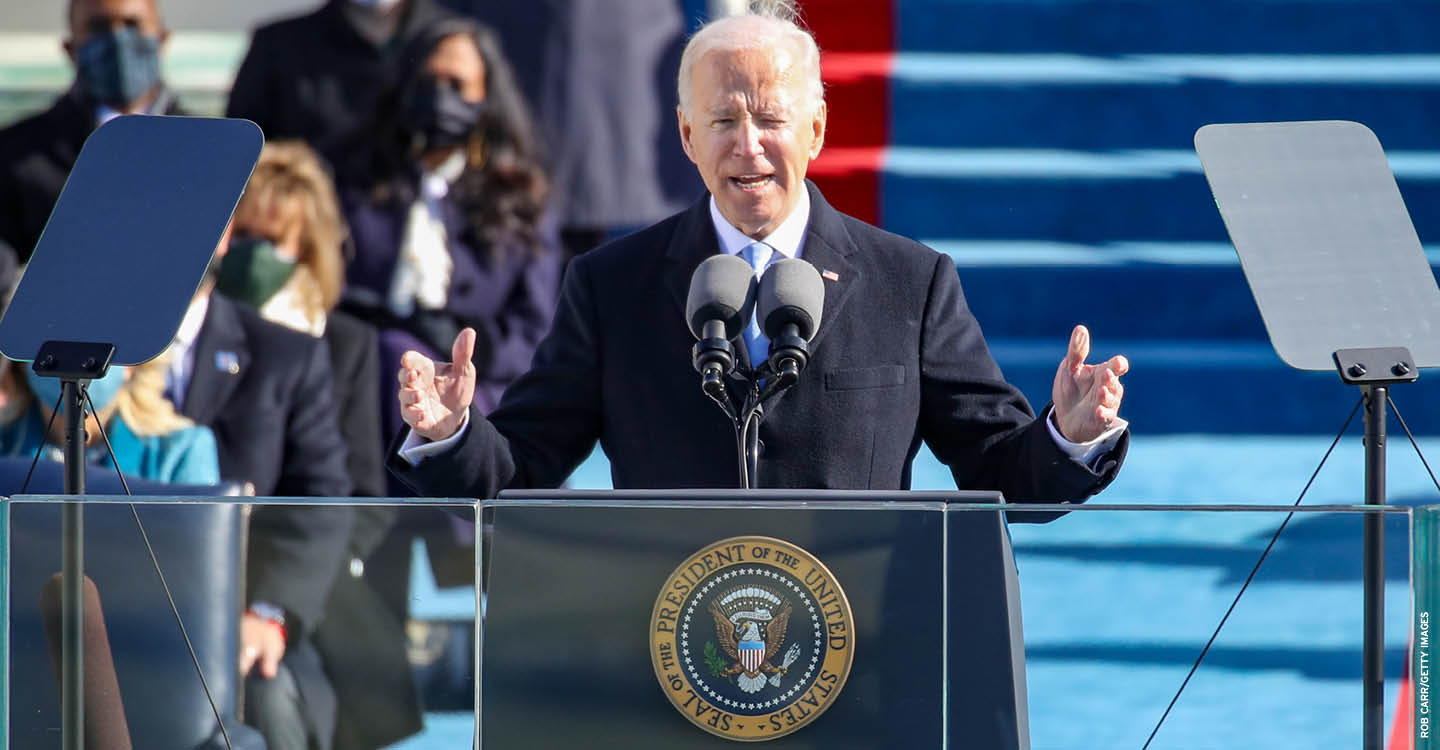The scene at the inauguration was unlike any in American history, underscoring just how unprecedented this moment is—and how difficult the challenges are that await the Biden administration. The event, which is typically attended by hundreds of thousands of people from around the country, was closed off to the public to prevent the spread of the coronavirus. With continuing online threats of violence from right-wing extremists, more than 20,000 National Guard troops were deployed to Washington, D.C., and streets were blocked off with barricades to create a buffer zone around the ceremony.
The inauguration symbolizes the peaceful transition of power from one president to the next. However, President Trump, who has falsely insisted since his loss to Biden in November that the election was stolen from him, wasn’t in attendance. He left the White House hours before the inauguration and flew to his home in Florida with First Lady Melania Trump. It was the first time a sitting president has skipped a successor’s swearing-in since Andrew Johnson sat out the 1869 inauguration of Ulysses S. Grant. Vice President Mike Pence and former presidents Barack Obama, George W. Bush, and Bill Clinton were there, though, as were many members of Congress, including many Republicans, and the Supreme Court—all wearing masks.
Biden’s inauguration caps one of the most bitter and contentious presidential elections in recent memory. Biden won the Electoral College by a vote of 306 to 232 and the popular vote by about 7 million votes. But Trump has repeatedly promoted false claims about election fraud. And on January 6, a mob of Trump supporters violently stormed the Capitol, where the U.S. Senate and House of Representatives were meeting to certify Biden’s election. The lawmakers had to evacuate and take shelter until the police cleared rioters from the building. The Senate and House then returned to declare Biden the winner.
In a historic move last Wednesday, the House of Representatives voted to impeach Trump for “incitement of insurrection.” It was the second time the House had impeached Trump—the first time in history that a president has been impeached twice. It’s unclear yet when a trial in the Senate will take place and whether it will affect the Biden administration’s ability to accomplish its objectives for its first days in office.
Biden has said that his primary goal is to get the coronavirus pandemic under control. He has repeatedly pledged to get “100 million Covid vaccine shots into the arms of the American people” by his 100th day in office. And to help people and the economy recover from the pandemic, Biden has proposed a $1.9 trillion stimulus package. The proposal includes investing in a national vaccination program and sending $1,400 checks to every American under a certain income level. It would also provide billions of dollars in grants and loans to small businesses and additional funds to schools to help them reopen safely.
Beyond handling the pandemic, Biden has vowed to reverse many of the policies enacted during the Trump administration. That includes having the U.S. rejoin the Paris climate agreement, a global pact to limit greenhouse gas emissions, from which Trump had withdrawn. Biden has also said he will revamp the nation’s immigration system and make it a top priority to address racial injustice.
But Biden enters the White House at a time of deep divisions and distrust in American institutions. In a poll conducted shortly before the election by the Associated Press and the NORC Center for Public Affairs Research, 85 percent of registered voters described the nation as being “greatly divided.” And only 15 percent said American democracy is working extremely or very well.
In his speech, Biden urged Americans to dial down the temperature of their political disagreements and try to work together.
“Politics doesn’t have to be a raging fire, destroying everything in its path,” he said. “Every disagreement doesn’t have to be a cause for total war. And we must reject the culture in which facts themselves are manipulated and even manufactured.”
Some political experts say that Biden can help unify the country and reduce tensions by getting the pandemic and the economic crisis under control.
“This is a moment of great challenge,” says Timothy Naftali, a presidential historian at New York University, “but also great opportunity.”

